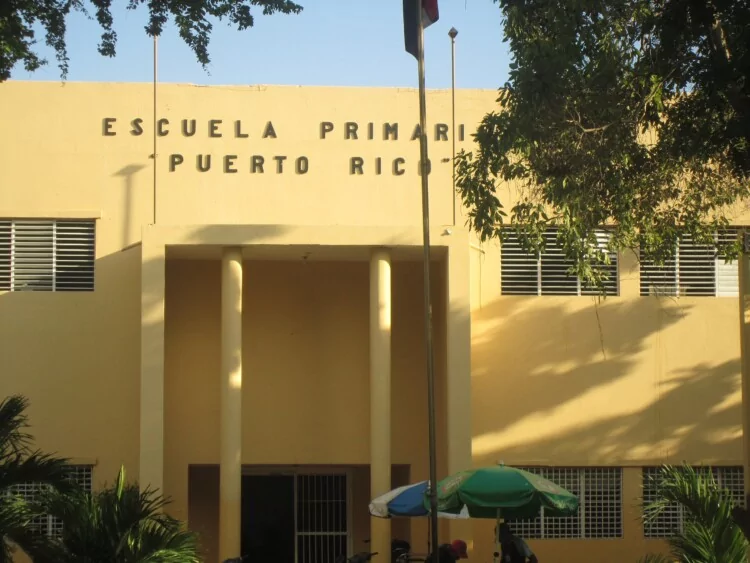Some of the most impactful contributions universities make to society stem from faculty members’ external engagement—i.e., researcher engagement with policymakers and practitioners. A faculty member’s meeting with a CDC official can lead to new public health guidelines. A faculty member’s op-ed on student debt forgiveness can catalyze executive action. A faculty member’s congressional testimony on climate change can result in new legislation.
And while universities recognize the importance of such engagement, numerous structural barriers inhibit faculty members from participating in these activities. At research universities, barriers include reward structures that privilege traditional academic products, such as peer-reviewed publications, and myriad competing demands on faculty members’ time. Such obstacles may be especially salient for faculty of color (FOC), given the unique challenges they face due to their under-representation in tenure-stream faculty positions (Colby & Fowler, 2020), experiences with isolation and tokenization (Settles et al., 2019), disproportionately high service loads (Guillaume & Apodaca, 2020; Trejo, 2020), and structural barriers to obtaining tenure and promotion (Kelly & McCann, 2014; Kelly et al., 2017; Turner et al., 2008).
Numerous structural barriers inhibit faculty members from engaging with policymakers and practitioners
Our ongoing study, which is part of a process to optimize the Research-to-Policy Collaboration (RPC) Model, sheds light on barriers that impede FOC from conducting external engagement. Specifically, we sought to understand how FOC at research universities perceive policy engagement, one form of external work. We have interviewed 20 faculty members of color who are either on the tenure track or tenured. Here is what we’ve learned about FOC’s barriers to engaging with policy and practice, and their recommendations for support from their universities.
Barrier #1: Time
The academic profession places numerous competing demands on faculty members’ time (e.g., course preparation, grading, reading dissertations, meeting with students, conducting research, applying for grants, and attending faculty and committee meetings). While this is true of all faculty, research has shown that FOC shoulder disproportionate shares of service responsibilities (Guillaume & Apodaca, 2020).
One of our participants, a Black woman, described attending 9 meetings a week and supervising 20 students simultaneously.
This disparate allocation of service loads is partly due to tokenization. FOC are expected to have expertise in Diversity, Equity, and Inclusion (DEI) issues and are asked to serve on committees that deal with these topics, often to check a diversity box (Brayboy et al., 2015; Niemann, 2016). Our participants recognized some of this service as personally meaningful, but it comes at a cost for FOC, a phenomenon known as the minority tax (Trejo, 2020; Williamson et al., 2021).
FOC may also face greater time constraints with respect to teaching and research. For instance, FOC may need to “work harder” to “overcome negative stereotypes” (Settles et al., 2019, p. 70).
Regarding teaching, FOC, especially women of color, are subject to negative bias in student evaluations (Chávez & Mitchell, 2020; Hamermesh & Parker, 2005), which could pressure them to spend more time on teaching preparation and related activities.
Additionally, in our study, numerous participants noted that the type of research they conduct, including community-based research, is more time-intensive than other types of research since it hinges on cultivating trust with involved communities.
Recommendations for Universities
- Be mindful of the distribution of service loads across faculty, especially those related to DEI, to ensure they do not fall disproportionately on FOC.
- Account for the time-intensive nature of certain types of research, including community-based research, in formal evaluations.
- Appraise course evaluations for bias based on the instructor’s social characteristics (see this review of such studies); modify evaluation processes and materials accordingly. For instance, research shows that apprising students of the high-stakes nature of student evaluations results in higher ratings for FOC (Genetin et al., 2021).
Barrier #2: Incentive Structures
Participants in our study shared that external engagement typically takes a back seat in formal reward structures within their research universities.
Nearly all participants mentioned that their institutions’ tenure and promotion processes privilege peer-reviewed journal publications and research grants.
Participants also noted that some forms of external engagement are valued more highly than others. Higher-status engagements (e.g., testifying before congress) tend to be more exclusionary. Faculty in our study, who are all people of color, indicated they have less access to those opportunities given the closed and racialized nature of policy networks (Rosino, 2016).
Recommendations for Universities
- “Count” impactful work, including external engagement, in formal evaluation processes.
- Incentivize external engagement by recognizing it informally, including via “shout-outs” in departmental, college-wide, or university
- Recognize external engagement and faculty who engage in it in spaces beyond your institutions, including at conferences held by professional organizations.
Barrier #3: Resources
Faculty of color, especially women of color, tend to engage in more invisible labor (Gordon et al., 2022; Reid, 2021) and are compensated less for their work (McChesney, 2018). People of color are also more likely to come from lower wealth backgrounds (Bhutta et al., 2020). For these reasons, unpaid labor is especially burdensome for FOC, especially women of color.
One participant, a Latina, shared her guilt for having to turn down a labor-intensive engagement for which she and one other person were offered dinner and a total of $100 in compensation.
Unpaid labor is especially burdensome for faculty of color, especially women of color
Unpaid external engagement work may constitute an opportunity cost. Faculty could instead use their time and expertise in ways that provide monetary compensation (e.g., evaluation work, consultations, or paid lectures).
Recommendations for Universities
- Offer compensation for FOC’s time spent on external engagement work that the institution values (e.g., through start-up and/or summer funds).
- Provide funding for other expenses related to external engagement, including travel (e.g., to meet with policymakers) and professional development.
Barrier #4: Training / Opportunities
Faculty seldom receive training to prepare them for engaging policymakers or practitioners. The communication methods employed in academia (e.g., emphasizing nuance and uncertainty) are rarely adequate for external audiences. This lack of training can preclude external engagement for all faculty across racialized groups. Yet, a related barrier to engagement may be particularly salient for FOC: opportunities for engagement in exclusionary spaces.
For instance, faculty members in our study mentioned the difficulty of entering policy spaces, which tend to be overwhelmingly White and male.
Lack of training can preclude external engagement for all faculty across racialized groups. Yet, a related barrier to engagement may be particularly salient for FOC: opportunities for engagement in exclusionary spaces
Recommendations for Universities
- Offer professional development opportunities to help faculty engage with external constituencies. This can happen through partnerships with existing organizations (e.g., Research-to-Policy Collaboration, Scholars Strategy Network, The OpEd Project).
- Given the exclusionary nature of some spaces, such as major media outlets and policymaking arenas, faculty members and administrators with access to these spaces should connect FOC with opportunities for engagement.
- Create departmental or other academic unit-level infrastructures to track policy issues, build relationships with policymakers, and connect policymakers with researchers working on timely issues.
Barrier #5: Consequences
When FOC, especially women of color, engage in public venues (e.g., writing op-eds or testifying in congress), they often face negative consequences.
In our study, participants mentioned either their own negative experiences (i.e., being harassed) during or after public or policy engagement or the experiences of other people of color, especially women of color. These consequences include threats to their careers (e.g., being denied tenure) or threats to their physical safety.
Several faculty members also mentioned that the stress of this type of engagement negatively affected their physical health, especially surrounding recent events, such as the killings of George Floyd and Breonna Taylor.
Recommendations
- Universities should protect FOC, including by offering job security.
- Departments and academic units should convey genuine displays of support to FOC, including through the cultivation of safe spaces that demonstrate a commitment to equity and academic freedom.
Related recommendations to help FOC feel supported include:
- Hiring and promoting more FOC, and
- Facilitating and providing resources for affinity groups that enable FOC to support each other.
Greater representation among FOC would also reduce the burdens of marginalization, isolation, tokenization, the minority tax, and racial battle fatigue (Niemann, 2016).
Conclusion
Universities play a critical role in solving societal problems. Yet, as long as they fail to recognize and incentivize faculty members’ engagement with policymakers and practitioners, their potential for impact will remain unfulfilled. Our ongoing study has unearthed numerous structural barriers to bridging the knowledge-application divide that are especially salient for FOC. At the same time, it has generated recommendations for universities to better support FOC’s engagement work, including accounting for the numerous and inequitable time demands on FOC’s time in formal evaluations, rewarding external engagement formally and informally, adequately compensating FOC for their work, connecting FOC with opportunities for engaging with policy and practice, and fostering a sense of security for FOC.
References
Brayboy, B. M. J., Solyom, J. A., & Castagno, A. E. (2015). Indigenous peoples in higher education. Journal of American Indian Education, 54(1), 154-186.
https://www.jstor.org/stable/10.5749/jamerindieduc.54.1.0154
Bhutta, N., Chang, A. C., Dettling, L. J., & Hsu, J. W. (2020, September 28). Disparities in wealth by race and ethnicity in the 2019 survey of consumer finances. Board of Governors of the Federal Reserve System. https://doi.org/10.17016/2380-7172.2797
Chávez, K., & Mitchell, K. (2020). Exploring bias in student evaluations: Gender, race, and ethnicity. PS: Political Science & Politics, 53(2), 270-274. doi:10.1017/S1049096519001744
Colby, G., & Fowler, C. (2020). Data snapshot: IPEDS data on full-time women faculty and faculty of color. American Association of University Professors.
Genetin, B., Chen, J., Kogan, V., & Kalish, A. (2022). Mitigating implicit bias in student evaluations: A randomized intervention. Applied Economic Perspectives and Policy, 44(1), 110-128.
Gordon, H. R., Willink, K., & Hunter, K. (2022). Invisible labor and the associate professor: Identity and workload inequity. Journal of Diversity in Higher Education. Advance online publication. https://doi.org/10.1037/dhe0000414.
Guillaume, R. O., & Apodaca, E. C. (2022). Early career faculty of color and promotion and tenure: The intersection of advancement in the academy and cultural taxation. Race Ethnicity and Education, 25(4), 546-563.
Hamermesh, D. S. & Parker, A. M. (2005). Beauty in the classroom: Instructors’ pulchritude and putative pedagogical productivity. Economics of Education Review, 24(4), 369-376.
Kelly, B. T., & McCann, K. I. (2014). Women Faculty of Color: Stories Behind the Statistics. The Urban Review, 46(4), 681–702. https://doi.org/10.1007/s11256-014-0275-8
Kelly, B. T., Williams, C. D., & Gayles, J. G. (2017). Recruitment without retention: A critical case of black faculty unrest. Journal of Negro Education, 86(3), 305–317. https://doi.org/10.7709/JNEGROEDUCATION.86.3.0305
Laden, B. V., & Hagedorn, L. S. (2000). Job satisfaction among faculty of color in academe: Individual survivors or institutional transformers? New Directions for Institutional Research, 105, 57– 66. doi:10.1002/ir.10505
McChesney, J. (2018). Representation and pay of women of color in the higher education workforce. College and University Professional Association for Human Resources.
Niemann, Y. F. (2016). The social ecology of tokenism in higher education. Peace Review: A Journal of Social Justice, 28(4), 451-458. https://doi.org/10.1080/10402659.2016.1237098
Reid, R. A. (2021). Retaining women faculty: The problem of invisible labor. PS: Political Science & Politics, 54(3), 504-506.
Rosino, M. L. (2016). Boundaries and barriers: Racialized dynamics of political power. Sociology Compass, 10(10), 939–951. https://doi.org/10.1111/soc4.12412
Settles, I. H., Buchanan, N. T., & Dotson, K. (2019). Scrutinized but not recognized:(In) visibility and hypervisibility experiences of faculty of color. Journal of Vocational Behavior, 113, 62-74.
Trejo, J. (2020). The burden of service for faculty of color to achieve diversity and inclusion: the minority tax. Molecular Biology of the Cell, 31(25), 2752-2754. https://doi.org/10.1091/mbc.E20-08-0567
Turner, C. S. V., Gonzalez, J. C., Wood, J. L. (2008). Faculty of color in academe: What 20 years of literature tells us. Journal of Diversity in Higher Education, 1(3), 139-168. https://doi.org/10.1037/a0012837
Williamson, T., Goodwin, C. R., & Ubel, P. A. (2021). Minority tax reform—Avoiding overtaxing minorities when we need them most. New England Journal of Medicine, 384(20), 1877-1879. 10.1056/NEJMp2100179
h4, strong{font-weight: bolder !important;}





